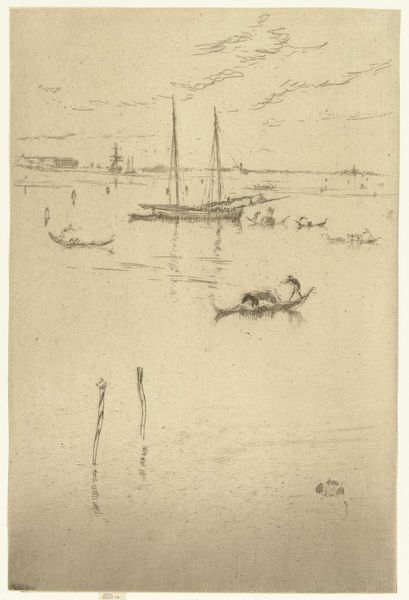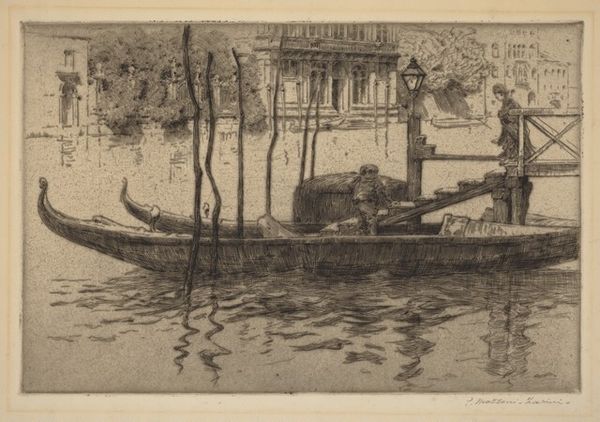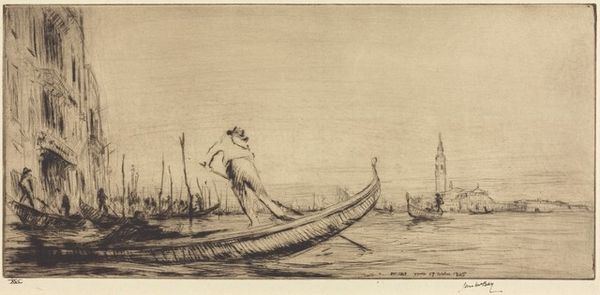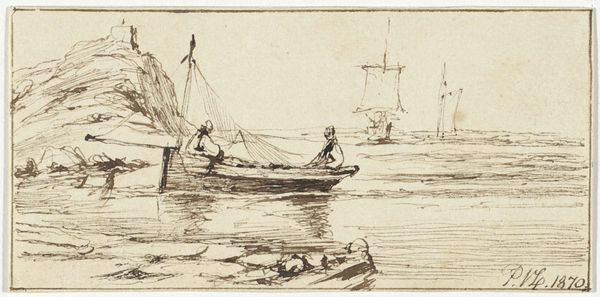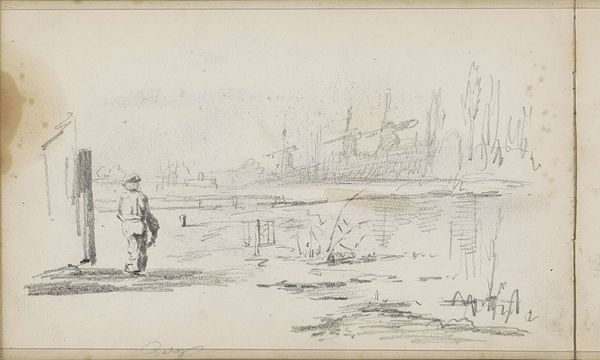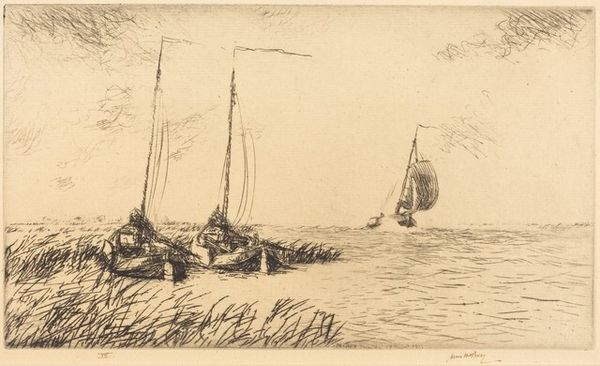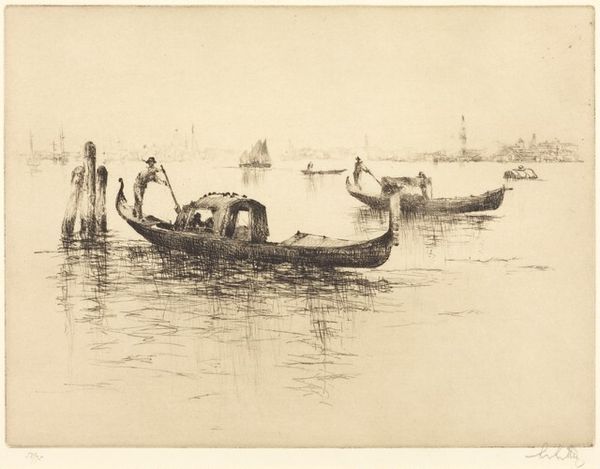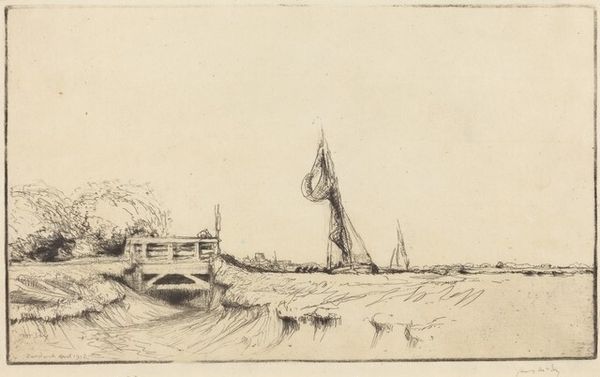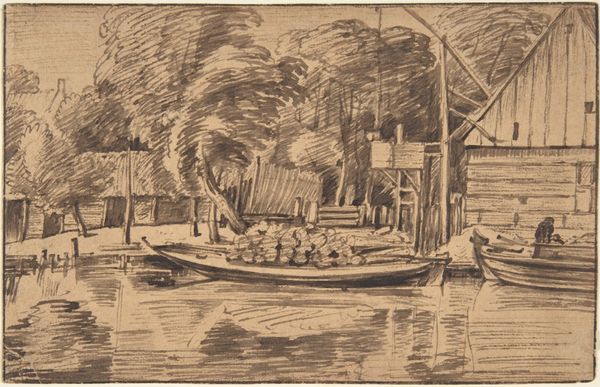
drawing, print, etching, ink
#
drawing
# print
#
etching
#
landscape
#
ink
Copyright: National Gallery of Art: CC0 1.0
Editor: We’re looking at "Durgerdam," an etching made in 1910 by James McBey. The composition, dominated by the stark pier and the figures clustered near the boat, feels both intimate and expansive, capturing a sense of daily life on the water. What's your take on this work? Curator: What strikes me is how this image reflects a specific moment in the history of printmaking and its relationship to a broader public. Etchings like these were very accessible; they were part of a democratization of art, offering original works at prices that middle-class homes could afford. Does the scene suggest a particular class dynamic to you? Editor: Hmm, the figures look working-class, but there is a certain charm in the details and the care taken in depicting this everyday life. Do you think there is any connection to the Impressionists who focused on fleeting moments? Curator: Absolutely! This etching inherits the Impressionist interest in capturing modern life and the fleeting moment, but also embodies a uniquely public and reproducible character. Look how the scene shows individuals participating in commerce or transportation; these figures highlight labour within society. McBey's choice of printmaking extends this ethos: making art a public utility, rather than a private luxury. Editor: So it's not just about the scene itself but also about how the medium allows it to circulate in society. Curator: Precisely. The visual language communicates a socio-economic message, heightened by the deliberate choice of the medium as etching. This also served the function of enhancing the artist’s recognition. By distributing widely and in multiple iterations, McBey made his vision and name more accessible to a public. Editor: I had never considered that before, it definitely makes me think about the socio-political context surrounding it, besides the Impressionistic undertones. Curator: Indeed. Understanding that interplay between subject matter, artistic technique, and its socio-historical context unveils the multi-layered role that artworks have in society.
Comments
No comments
Be the first to comment and join the conversation on the ultimate creative platform.


